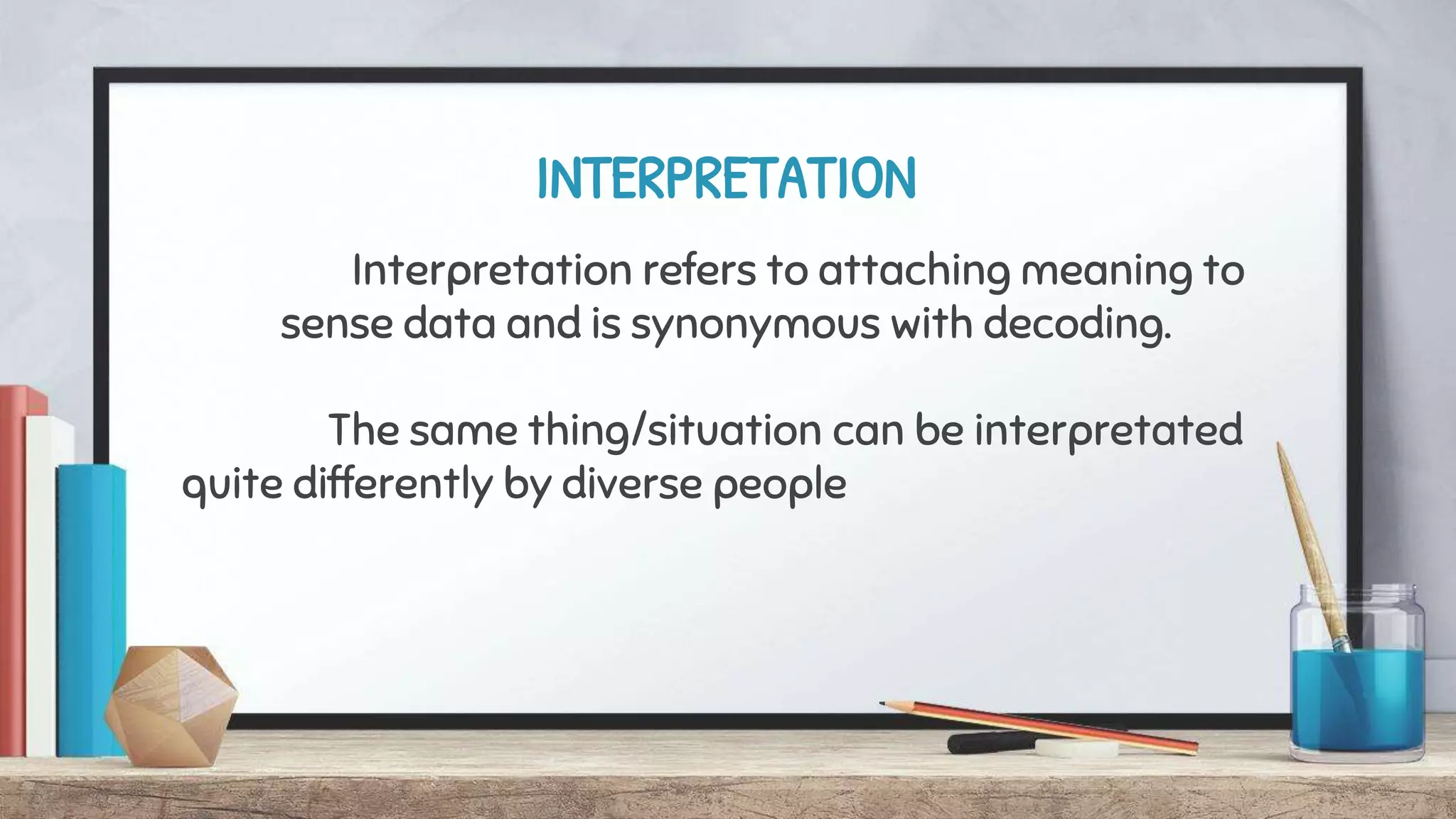The document discusses the influence of culture on human perception, detailing how our senses—sight, hearing, smell, taste, and touch—function and their limitations. It explains the processes of selection, organization, and interpretation in perception, emphasizing that cultural background significantly shapes how stimuli are processed and understood. Additionally, it contrasts high-context and low-context communication styles, showing how these cultural frameworks impact meaning and expression in communication.
































